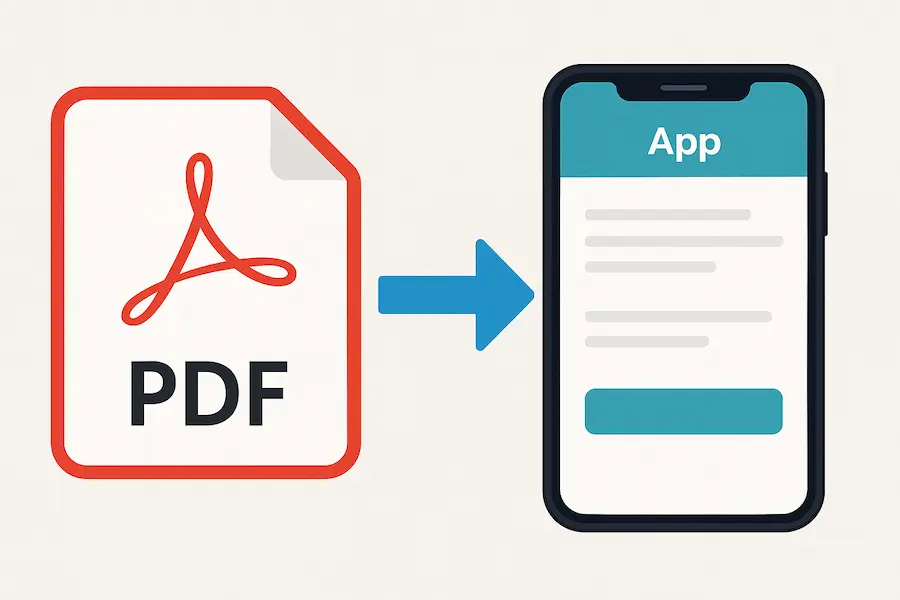
Managing loan recovery is one of the most critical functions in any lending operation. Whether you’re running a microfinance institution, a digital lending startup, or a traditional non-banking financial company (NBFC), the ability to track repayments, follow up consistently, and escalate overdue accounts is essential to maintaining healthy cash flow. Yet, for many lending teams, collection processes are still stuck in manual workflows—Excel sheets, WhatsApp messages, and disconnected communication between field agents and office staff.
These outdated methods are not only inefficient but also prone to error, delay, and revenue leakage. As loan portfolios scale, managing collections manually becomes unsustainable. Borrowers slip through follow-up gaps, agents miss visits, and supervisors lack visibility into ground-level activity.
That’s why lending teams across industries are turning to purpose-built loan collection apps—tools designed specifically to help teams track, follow up, and improve recovery rates with far more control and clarity. This article explains the core challenges in loan collections, what features an effective collection system needs, and how Clappia enables teams to build their own custom loan collection app without coding.

Lending isn’t just about disbursing money. It’s about getting it back on time, with minimal friction. And when your collection process is patchy, every delay increases the cost of recovery and reduces the effective ROI on your portfolio.
Here are some of the most common challenges lending teams face:
According to a 2023 report by IndiaLends, 72% of lending teams with a digital collection system reported improved recovery timelines within three months of implementation. Manual processes simply cannot match that level of efficiency or responsiveness.
Globally, a McKinsey study on debt collections found that digital-first collection strategies can reduce delinquency rates by 20–30% and lower overall operational costs by up to 40%.

While loan collection apps are becoming more common, not all of them are designed for real-world team operations. For lending teams, especially those managing daily or weekly collections, the ideal solution must go beyond just digital records. It needs to handle assignments, alerts, and field submissions in real time.
Key requirements include:
Many off-the-shelf collection apps are rigid. They may not support your payment frequency (daily vs. monthly), your agent workflows, or your follow-up style. That’s why the ability to build and modify your own app without relying on developers is a major advantage.
Clappia lets teams build powerful loan collection systems using blocks, workflows, and role-based access.
To fix the problems we mentioned in this article, we built a simple loan collection app in Clappia using the platform’s pre-configured blocks and automation tools. The idea was to make day-to-day collections easier to manage without relying on spreadsheets, separate tools, or manual follow-ups.

There are two apps that we created in Clappia that are connected to each other:
The setup is flexible enough to match how your team already works. You can track payments, trigger reminders, send emails, and update loan statuses—all within these two apps.
Let’s look at how you can replicate a complete loan collection process using the two apps mentioned. Below is how we set it up, of course you can use the same or change it according to your requirements:
.png)
This app is created and managed by the admin or central office team.
It holds all borrower records, loan details, EMI schedules, and repayment tracking information. It’s also where automated reminders, escalation triggers, and payment updates start from.
This is your central database for every loan. Whenever a collector submits a repayment, this app gets updated automatically through workflows
This app is used to track the master record of each loan account. Any payment made by the borrower is reflected here, and it can be used to drive follow-up workflows automatically.
Since this app stores your entire loan book, it can also be connected to Google Sheets or internal databases for reporting or syncing with existing systems. If you need to generate repayment summaries or borrower reports, PDF generation can be added directly inside Clappia. You can also control which users see what—so field teams can’t access or modify sensitive records.
.png)
.png)
Used by field agents or collection staff to record repayment activity.
This app pulls borrower details using the “Get Data from Other Apps” block. The agent selects the Loan ID and the app auto-fills the borrower’s name, contact, EMI amount, and current status. These fields are auto-filled and can’t be edited by the agent (unless you need it).
Once the data is pulled in, the agent enters the collection details—how much was collected, the payment mode, visit outcome, and any remarks. The app also captures GPS location, which helps verify visit authenticity. This feature is especially useful for managers who want to confirm that visits happened at the borrower’s location.
You can enhance this app even further:
If you’re using other systems like spreadsheets or ERPs, the app can send the collected data directly to Google Sheets or trigger actions through external integrations. That makes it easier for teams who are still shifting to digital but want to keep some legacy tools.
This app gives field agents exactly what they need—no distractions, no excess fields, just the right data and actions for collections. Everything else is handled in the background through workflows.
Once the apps are set up, workflows do most of the heavy lifting. In Clappia, you can configure rules to automatically update records, send reminders, and assign follow-ups based on what’s submitted, no technical setup required.
Here’s how we’ve used workflows:
The Borrower Master App isn’t just a record-keeping tool but actively drives recovery by automating key follow-ups and status changes. Here's how the workflows are set up in this app:

When the EMI amount is collected, an email is automatically sent to both the borrower and the supervisor. This gives both sides a clear confirmation that the EMI amount has been paid off in full.
Three days before the due date, the system checks if the EMI has been collected. If not, it sends a mobile notification to the assigned collector every day as a reminder. This continues until the EMI is collected or the loan is marked as completed.
If the loan status is updated to “Default,” the system sends out an email to both the borrower and the supervisor. This helps ensure that serious cases are followed up quickly.
When the total amount paid back matches the original loan amount, the app automatically updates the loan status to “Completed.” There’s no need for manual tracking or someone remembering to close the account.
You can also add a workflow that updates the next EMI due date based on the repayment frequency after each collection. This helps the system stay current and avoids confusion for both the borrower and the collector.

When the collector records a payment that matches the EMI amount, the system automatically updates the ‘Amount Paid Back’ field in the Borrower Master App. This way, admins don’t have to make manual changes every time a full payment is made.
If the amount collected is less than the EMI, an email is sent to the borrower. At the same time, the app adds the partial amount to the total paid so far. After two days, a reminder is sent to the collector asking them to revisit the borrower.
If the collector selects “Visit Again” as the follow-up action, the system schedules a reminder for that day. The borrower also receives an email letting them know the visit was missed and another one is planned.
If the follow-up action is marked as “Escalation,” emails are sent to both the borrower and the supervisor. This ensures overdue cases are flagged and tracked early.
These workflows mirror how collection teams actually work—without needing to manage it all manually. You can adjust conditions, timing, and actions anytime. Everything from borrower emails to internal escalations is controlled through configurable logic inside the app.
All of these workflows are built visually in Clappia using using the precoded blocks available. The nodes match real-world team structures, agents on the ground, admins managing data, and supervisors overseeing trends.
What makes this approach effective isn’t just that it’s digital but it’s that it mirrors how lending operations actually work.
Here’s why this structure works better than generic CRMs or offline workflows:
When follow-ups are automated and tracking is centralized, payments stop falling through the cracks. Supervisors can intervene earlier, and field agents know exactly where to go and what to collect.
Teams using similar setups have reported:
In high-volume lending, even a 5–10% improvement in collection timelines can make a major difference in cash flow and operational overhead.
This two-app setup can scale as your team and portfolio grow. You can build:
Since Clappia apps are modular and editable anytime, you’re not locked into one structure. You can add blocks, tweak workflows, or change dashboards as your process evolves.
A loan collection app is a digital tool used by lending teams to track repayments, follow up with borrowers, and automate reminders or escalations. It replaces manual collection sheets and helps improve on-time recovery.
Yes. Clappia apps are mobile-friendly and work even in low-connectivity areas. Field agents can input data, upload receipts, and capture GPS coordinates directly from their phone.
Absolutely. You can configure logic such as:
Yes. Clappia lets you build this entire system using pre-coded blocks and workflow nodes.
You can configure the app to manage multiple loans linked to one borrower ID, or use filters to show active loans only. It’s fully customizable.

L374, 1st Floor, 5th Main Rd, Sector 6, HSR Layout, Bengaluru, Karnataka 560102, India

3500 S DuPont Hwy, Dover,
Kent 19901, Delaware, USA


3500 S DuPont Hwy, Dover,
Kent 19901, Delaware, USA

L374, 1st Floor, 5th Main Rd, Sector 6, HSR Layout, Bengaluru, Karnataka 560102, India







